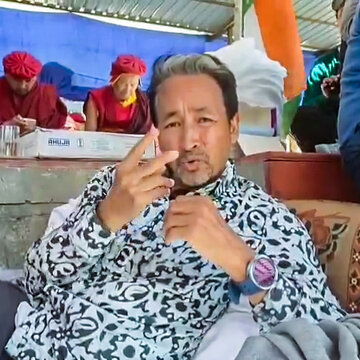Peaceful protests about demanding statehood for Ladakh and its inclusion in the Sixth Schedule of the Indian Constitution were going on, and when peaceful rallies were not generating results, the young protesters became angry, and the unrest happened. This led to a conclusion of 15-day hunger strike of renowned climate activist and educator Sonam Wangchuk.
Sonam Wangchuk, who spoke during a virtual press conference, said there was growing anger among Ladakh's youth since peaceful rallies were not generating results. According to the climate activist, the violent rallies on Wednesday were most likely provoked by the injuries of two elderly protestors, a 72-year-old man and a woman (62), on Tuesday.
On Wednesday, protests demanding statehood for Ladakh turned violent, killing four people and injuring at least 45 others, including 22 police officers.
What went wrong? Key reasons behind the violence
Lack of dialogue with the Government:
To provide Ladakh more autonomy and security for its ethnic inhabitants, protesters constantly sought genuine communication with the Center regarding their demands for statehood and inclusion in the Sixth Schedule. Over time, rivalry grew as a result of the belief that their opinions were being disregarded due to the lack of a structured negotiation procedure.
Triggering incident:
The injuries of two elderly protestors the day before the violence were the emotional trigger. The scenario became more tense because many demonstrators saw the incident as police overreach and arrived for the subsequent gathering in a tense, emotional state.
Youth unemployment and frustration:
A significant section of Ladakh's population is young, and many of them feel excluded from decision-making processes and have few job opportunities. Some of them moved to more aggressive forms of protest after months of nonviolent marches and hunger strikes yielded no noticeable results.
Local authorities may have miscalculated the protest's magnitude and intensity, leading to poor crowd management and administrative gaps. There was insufficient police presence, community mediators, and crowd control measures. This caused the situation to spin out of control as tempers boiled.
Social media and misinformation played a role in spreading unconfirmed videos and messages about police violence, leading to outrage and terror. This internet amplification exacerbated the mood on the ground, making demonstrators less likely to believe government assurances.
Here's what Sonam Wangchuk says
Wangchuk addressed PTI, "Two people were sent to the hospital yesterday. That seems to be the instant trigger... It influenced the younger generation. Ladakh youths banded together to declare a Ladakh bandh, and everyone came to the location where we were fasting. As the event continued with prayer and remarks, a group of young people stepped out to raise slogans. Later, we heard they went on a rampage, destroying police vehicles and the BJP office in Leh."
The central government has scheduled discussions on October 6 to resolve the Ladakh inhabitants' concerns. Local leaders, however, are unhappy with the postponed schedule and have called for quicker talks to stop more disturbances.





